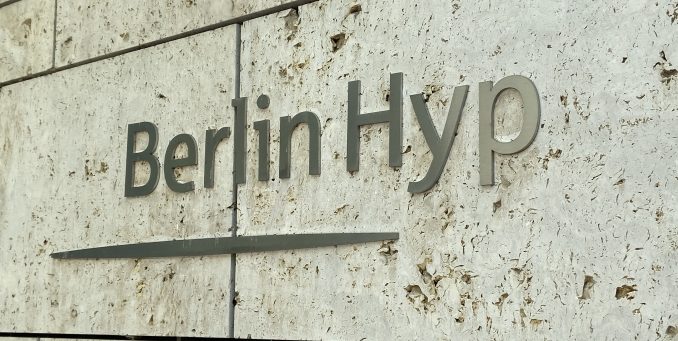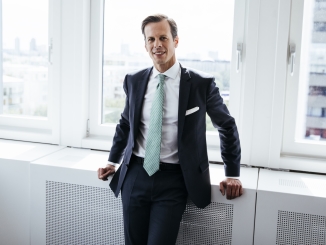
Berlin Hyp became the first European bank to have issued in green, social and sustainability-linked formats with the launch of a €750m 10 year mortgage Pfandbrief on Tuesday supporting affordable housing, and the bank plans to be a similarly familiar face in the social market as it is in green bonds.
Since its launch of the first green covered bond in 2015 – a €500m seven year Pfandbrief that matured yesterday (Thursday) – the German lender has become the most active European bank issuer of green bonds, and in April 2021 Berlin Hyp became the first bank to issue a sustainability-linked bond (SLB) – it remains the only European bank to have done so, with most facing regulatory hurdles regarding SLB issuance.
According to Bodo Winkler-Viti, head of funding and investor relations at Berlin Hyp, concrete plans to develop a social bond framework began shortly after the debut SLB.
“Our CEO flagged that this was in a way a missing piece of the puzzle,” he told Sustainabonds. “We had done so much in green, but social issues are immense, too, and as a real estate financer we felt we needed to engage more.
“The big issue of our time is affordable housing,” added Winkler-Viti. “We can see this very clearly in Berlin, where more and more people – not only the lowest incomes classes, but also lower-middle income classes – cannot afford to pay rents in the city anymore, but have to move further way. This exacerbates social segregation, which is not at all beneficial to society.”
Working with structuring advisors ABN AMRO and Crédit Agricole, Berlin Hyp therefore began establishing a social bond framework with affordable housing in its home market of Germany and next largest market of the Netherlands as eligible assets. Winkler-Viti said this proved more complicated than on the green side.
“There is not a common definition of what is affordable and what is not, for example,” he said. “Social project categories are in general much more difficult to quantify than with green finance, where you have CO2 as a unique currency.
“But we have legislation on the circumstances under which governments will provide subsidies to households that are in need.”
German loans to housing co-operatives and municipal housing companies as well as private landlords committed to affordable housing – which constitute 92% of Berlin Hyp’s €2.1bn social finance portfolio – are eligible if the underlying housing is eligible for subsidy under the German Housing Benefit Act, which takes into account regional variations.
Crucially, this is information Berlin Hyp has in its systems, and which can allow the issuer to target the appropriate households, according to Christoph Anhamm, managing director, FI DCM at ABN AMRO.
“The whole idea of structuring this framework started from the perspective of the tenant,” he said. “We looked at what are the requirements for them to access affordable housing, and came up with this German act that is at a federal level, so applies everywhere, but makes regional differences – an ideal combination.”
A similar methodology is applied to loans to Dutch Social Housing Organisations and private companies committed to affordable housing, which make up the other 8% of eligible social assets.
Alongside such criteria, Berlin Hyp introduced minimum environmental safeguards into its social framework, whereby only buildings among the 70% most environmentally efficient on a national basis are eligible, according to a methodology developed with Drees & Sommer, which has worked on the bank’s green projects.
“We were worried that people might think that perhaps we are just considering everything that is not green to be social,” said Winkler-Viti, “and we didn’t want to end up with a portfolio comprising houses that are only cheap because they are old and poor in energy efficiency. So we looked at where we could set an appropriate threshold and exclude the worst performing properties.”
The criteria also mirror the minimum social safeguards of green bonds, and Berlin Hyp has said in its framework that it will reflect developments in the proposed Social Taxonomy on a best efforts basis.
The social framework has a second party opinion (SPO) from ISS ESG confirming its alignment with the Social Bond Principles. The SPO provider also found the use of proceeds categories to have a significant contribution to SDG 1 “No poverty”, SDG 10 “Reduced inequalities” and SDG 11 “Sustainable cities and communities”.
With the framework in place, on Monday the inaugural deal was announced and investor calls were held, before launch on Tuesday morning. Winker-Viti (pictured) said the issuer was keen to move ahead quickly in light of the unpredictable backdrop.
 “Years ago we would have done a pan-European roadshow, but following the pandemic we can see people very efficiently online,” he said, “and market risk is at the moment very different from in previous times – we are in a situation where so many things have happened at once and now this crazy development in the rates market.
“Years ago we would have done a pan-European roadshow, but following the pandemic we can see people very efficiently online,” he said, “and market risk is at the moment very different from in previous times – we are in a situation where so many things have happened at once and now this crazy development in the rates market.
“So to minimise any chance of the deal not going well, when we saw there was a good window on the primary market we decided to proceed, and I think that was the right choice.”
Leads ABN AMRO, Commerzbank, Crédit Agricole, JP Morgan and LBBW opened books on Tuesday morning with guidance of the mid-swaps plus 6bp area for the 10 year euro benchmark mortgage Pfandbrief, expected rating Aaa, and ultimately priced the new issue at plus 2bp on the back of a final book above €3bn and comprising more than 100 investors, which also allowed Berlin Hyp to hit the upper end of its size options, €750m.
The order book is the biggest the issuer has achieved on any mortgage Pfandbrief.
“Investors have not been able to get their hands on a lot of ESG-labelled covered bonds and they clearly appreciated Berlin Hyp coming with their inaugural social covered bond and thus finally adding social bonds to their ESG commitment,” said André Bonnal, FIG syndicate at Crédit Agricole. “This lack of ESG covered bond supply clearly helped the bookbuilding dynamic and, combined with Berlin Hyp’s best in class status, allowed for pricing slightly inside the recent DKB social covered bond.”
The new issue came a week after Société Générale SFH had reopened the long end of the covered bond market by issuing the first euro benchmark beyond eight years since Russia’s invasion of Ukraine, a €1.25bn 12 year, and after fellow Berliner Deutsche Kreditbank on Thursday of last week (28 April) tapped the 10 year maturity for a €500m deal supporting local social housing that was the first benchmark mortgage Pfandbrief in social format.
Berlin Hyp had been eyeing the 10 year maturity even before last week’s successful supply, according to Winkler-Viti, given that it complements the duration of the eligible assets, and with the issuer having a 2032 gap in its yield curve.
“And we had been sure that this would work,” he added. “But, of course, DKB’s project was super-confirmation of that view and very nice to watch from our side, and we were very happy with our choice and the outcome.”
Berlin Hyp coming 1bp inside the re-offer spread of its neighbour was in line with the differential to be expected of the two credits, according to syndicate bankers, while Winkler-Viti said the leads estimated the social bond to have come perhaps 1bp inside where a conventional bond might have come.
“It’s always a bit of an academic discussion,” he added, “and the market is very supportive at the moment. There were conventional deals in the market on the same day and they went very well, and there would have been good demand either way.
“But the social element boosted demand, because social bond issuance in covered bonds is still very limited, and there are already investors who have special social funds, so this was very attractive for them.”
Having launched its inaugural social bond, Berlin Hyp intends to become a regular issuer in the format, in covered bonds but also unsecured issuance, with the framework allowing for a variety of instruments, including senior, Tier 2 and commercial paper.
“The bank now wants to grow the social finance portfolio,” said Winkler-Viti, “so there will be new assets in future.”
The bank has said that a next step will be to complement the green loans it offers with social loans.
Meanwhile, the new social mortgage covered bond issuance out of Germany has already piqued the interest of other banks, according to Anhamm at ABN AMRO. He said three factors could constrain follow-up supply: the overall resources available for ESG projects, some of which may already be taken up by green bond issuance; data availability, related to both social criteria and any minimum environmental safeguards; and the extent of any multi-family housing portfolios.
“Whether at the end of the day others follow the Berlin Hyp structure, or perhaps the DKB structure is more applicable to them at a more local level, I don’t know,” he said. “But we’ve already been having discussions with interested issuers.”



